| Journal |
Taq-e
Bustan |
|
Series:
Visual Essays Author:
Jamshid Varza
(Slide
Show) |
On the road traveling
from Tehran toward the city of Kermanshah "Bakhtaran," one
reaches the ruins of Taq-e Bustan before entering the city of Kermanshah.
This magnificent historic site is located on the foot of a mountain
where a creek flows into a large pool of water feeding the surrounding
trees and shrubs.
Investiture:
It was customary for Sassanian Emperors to have their investiture carved
in a prominent location on a mountain side immortalizing events of their
reign. The images of investiture placed the king in the center,
receiving the promise of guardianship of the kingdom from a divinity
while under the protection of the second divinity. This image
immortalized the role and position of each king in the house of Sassan,
ruling Iran from AD 225-641 .
Sassanians practiced personification of
divinities in their Investiture carvings. This seems an approach unique to
Sassanian Kings.
During the second half of Sasanian
dynasty this ancient site was an important post on the silk road.
Sassanian Emperors up to Narseh had their investiture all carved in
their homeland, Pars in Naqsh-e Rostam, Tang-e Chogan, Haji-Abad or
other areas.
This magnificent site houses three Taqs
or investiture carvings. We shall walk you through each one starting
from the oldest. Investiture scenes have given scholars a window into
the rich world of Sassanian history and art.
|
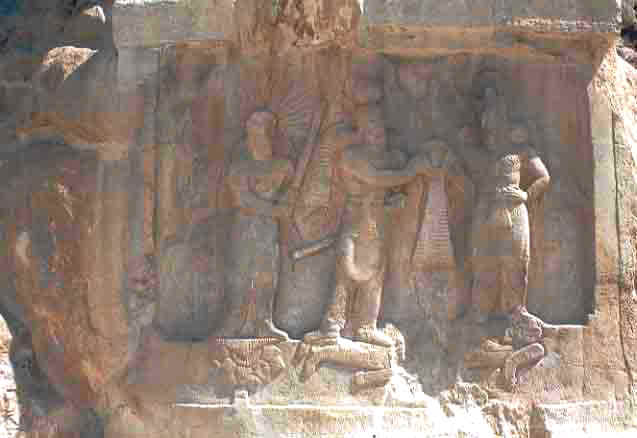 |
Ardeshir II chose Taq-e-Bustan for the location of his investiture.
Perhaps this location, not very far from Bistun (or Bagestan) mountain,
had gained importance for being a important post on the silk road which
connected Persia to eastern Roman provinces.
|
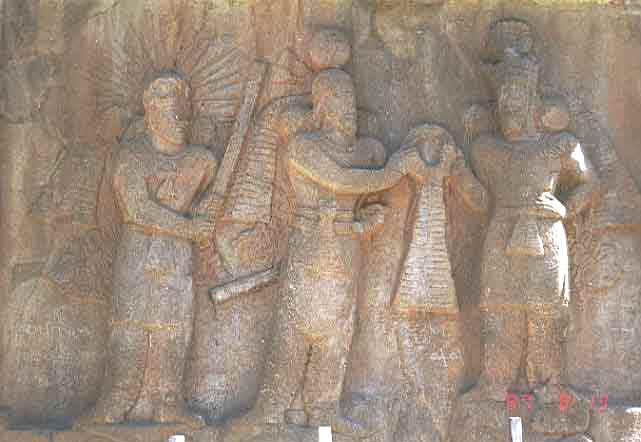 |
In the center Ardeshir II is receiving the
diadem from Ahura Mazda on the right while under the protection of Mitra on
the left. Mitra is recognized by his rayed headdress stands on a large
lotus flower holding the saber of justice -- the barsom.
Beneath the feet of the great king lies the
slain enemy, apparently a Roman. Some scholars mentioned the possibility
of the fallen character being the image of defeated Ahriman.
|
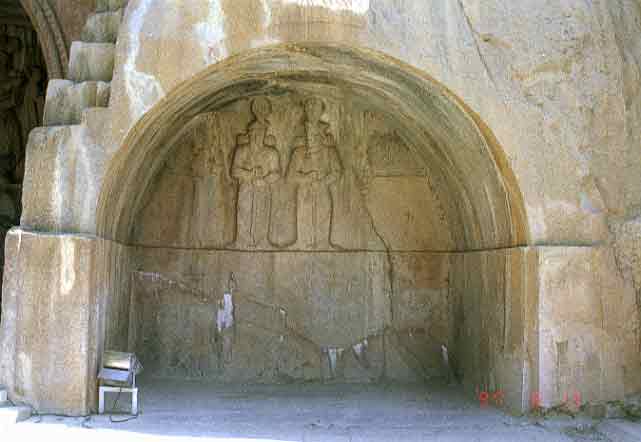 |
Relief depicting Shahpur III (AD 383-388)
Perhaps the carvings of the central iwan (carved Taq) in Taq-e-Bustan was never finished. This Taq
shows Shahpur III who succeeded Ardeshir II standing next to his father
Shahpur II (AD 310-379), the great
Sassanian Emperor.
|
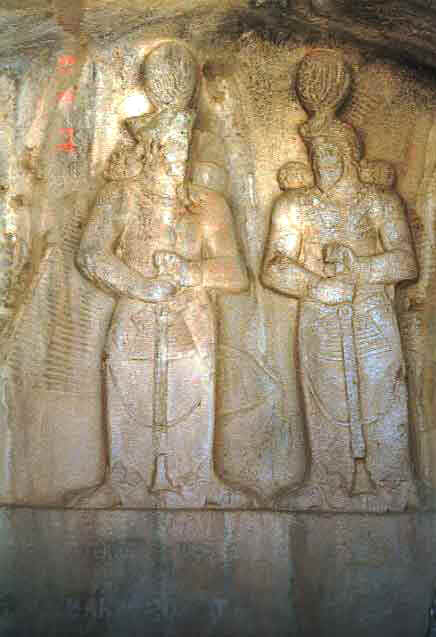 |
Close view of the central Taq shows only
images of Shahpur III and Shahpur II with no detailed decorations or any
investiture scene.
It is believed that Shahpur III legitimized
his reign by carving his image next to his great father, Shahpur II.
|
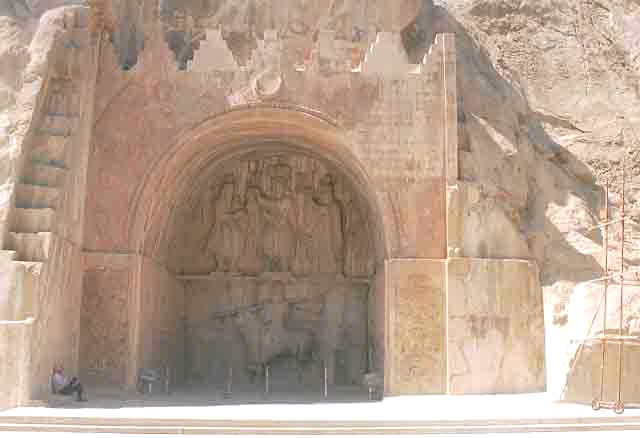 |
Investiture of Khosro II, Parviz (AD
590-628)
The larger iwan is the most majestic Sassanian investiture carving
surviving to date. The back wall is divided into two registers. The plan
indicates a triple majestic iwan which the third iwan (to the left) was
not constructed.
(The small dot on
lower-left corner is a man sitting in the arch's shade.)
|
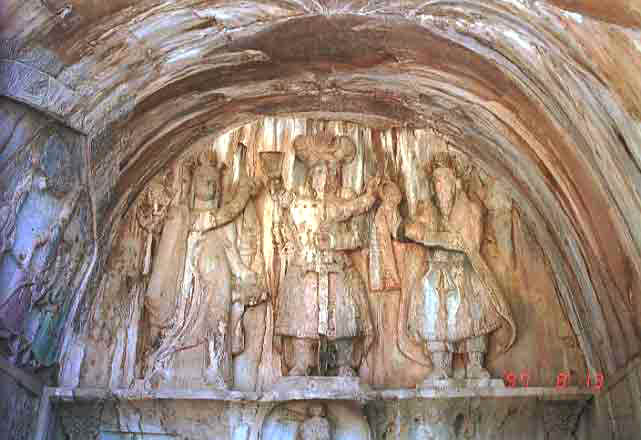 |
The tympanum above represents the investiture
of the king receiving two diadems, one from Ahuramazda (right), the other
from protecting angel of waters, Anahita (left).
On the lower register is the equestrian
statue of the king, Khosro-II Parviz, wearing a coat of mail.
|
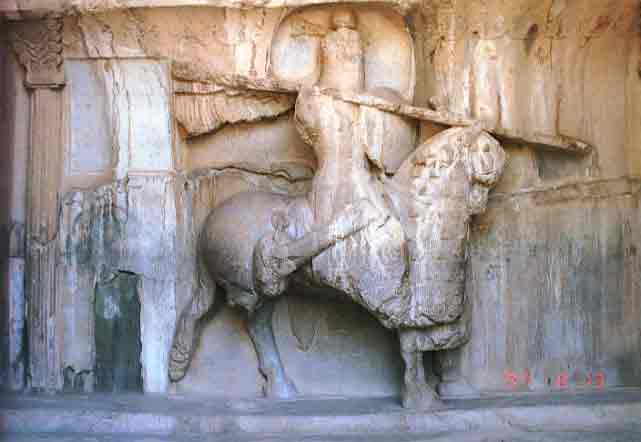 |
For this figure one might cite the description
of Ammianus Marcellinus (d.395AD):
"Moreover, all the companies clad in iron, and all parts of their
bodies were covered with thick plates, so fitted that the stiff joints
conformed with those of their limbs; and forms of the human faces were so skillfully
fitted to their heads, that since their entire bodies were covered with
metal, arrows that fell upon them could lodge only where they could see a
little through tiny openings opposite the pupil of the eye, or where
through the tips of their noses they were able to get a little
breath."
In another place Ammanius
says: "The Persians opposed us serried bands of mail-clad horsemen in
such close order that the gleam of moving bodies covered with closely
fitting plates of iron dazzled the eyes of those who looked upon them,
while the whole throng of horses was protected by coverings of
leather."
The figure of the horseman recalls the
knights of the Middle Ages of Europe. Despite the great difference in time
this visual relationship is not entirely accidental, since medieval
chivalry absorbed many Near Eastern traditions in the course of the
Crusades.
[1] Ammianus Marcellinus, Roman
general and historian served
in the army of Constantius II in Gaul and Persia. He fought against the
Persians under Julian the Apostate and took part in the retreat of his
successor, Jovian.
|
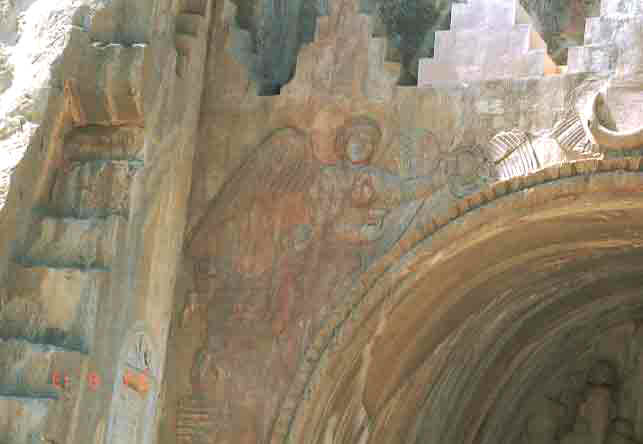 |
Image showing stone carvings on surrounding
walls and the main arch.
|
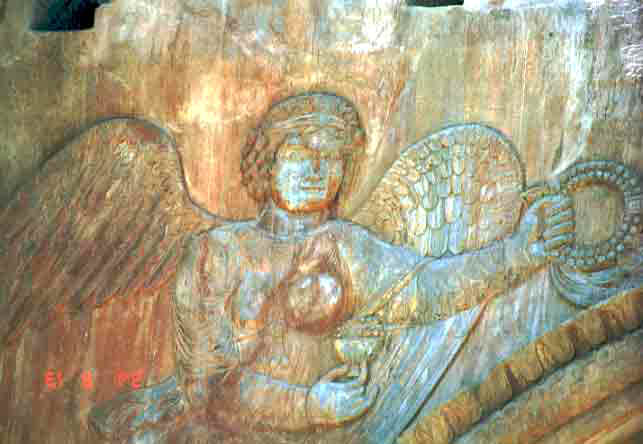 |
Close-up image of the guardian angel holding
the diadem above the main arch (left).
|
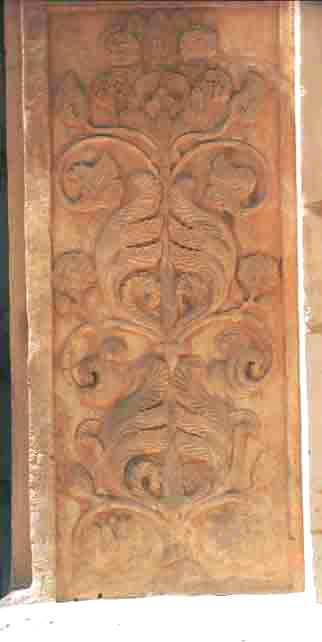 |
Detail of a scroll of flowers and acanthus
leaves carved on both sides of the facade of the iwan.
|
|
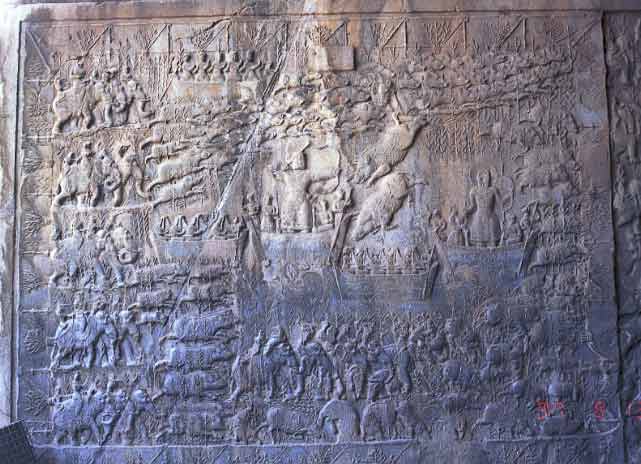
|
Boar hunting scene carved on interior right
wall of the Khosro II, Parviz's investiture Taq. This scene combines
two images of the king standing in a boat while targeting boars. This
carving carries a stunning level of detail.
|
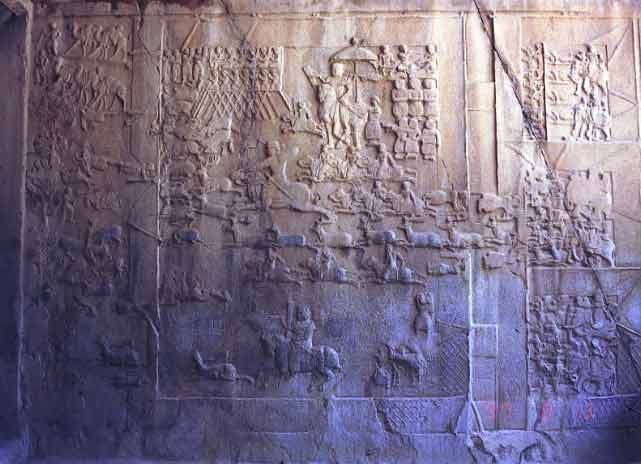 |
Deer hunting scene carved on interior left
wall of the Khosro II, Parviz's investiture Taq. This scene combines
two images of the king riding and hunting deer. Each item in this image is
carved with a great degree of detail.
|
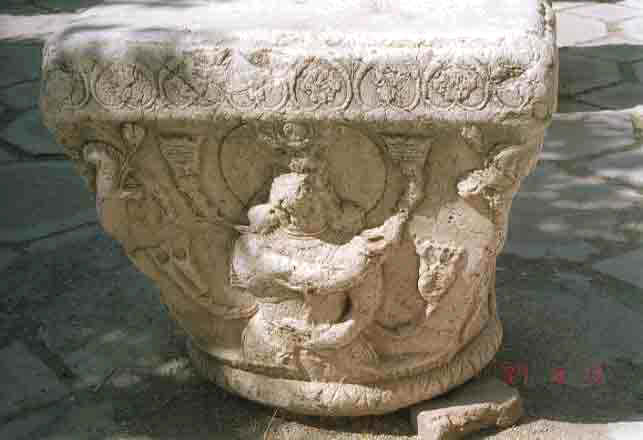 |
Ruins of a majestic building
Adjacent to three Taqs stands the ruins of a majestic building; stone made
ornaments carved in Sassanian style depict images of Investiture.
|
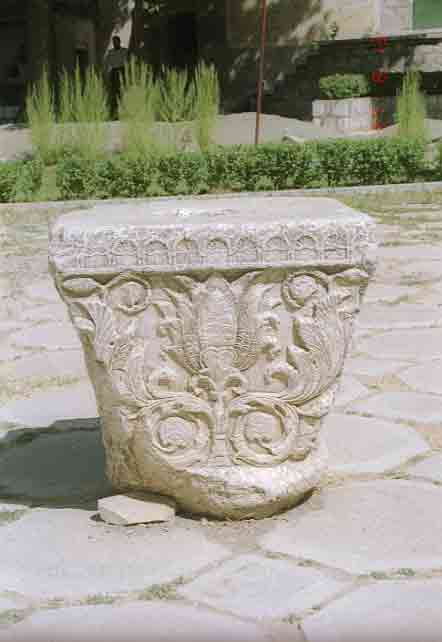 |
These building ornaments belong to a building
of immense importance which could be a palace or a memorial structure
celebrating the Investitures.
|
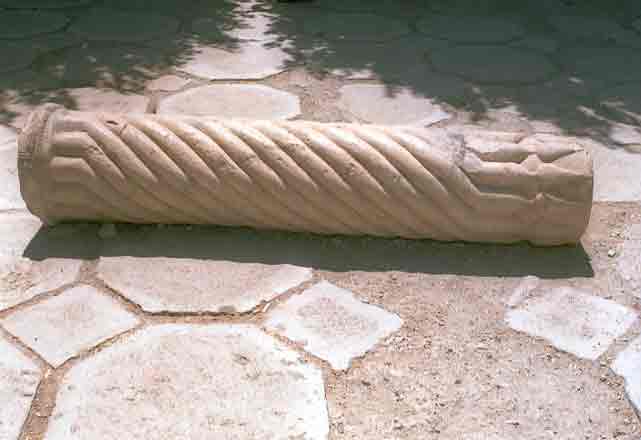 |
Fluted stone columns still remain in on site.
|
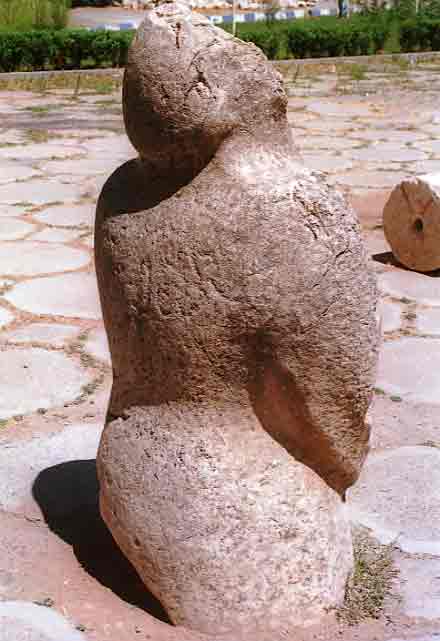 |
Sassanians were acquainted with the
practice of placing a relief or statue in a niche or a cave. The Sassanian
palace in Bishapur (near Kazerun) held sixty-four wall recesses for
holding statues.
Ruins of a large stone statue still stands
on the grounds adjacent to the Taqs.
|
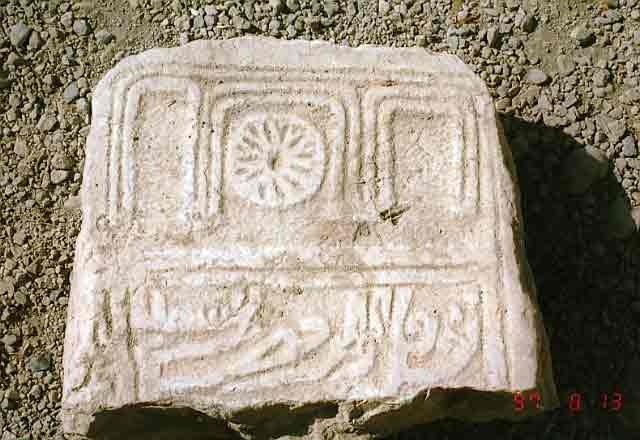 |
Remains of building ornament with carved image
of Pahlavi inscriptions.
|
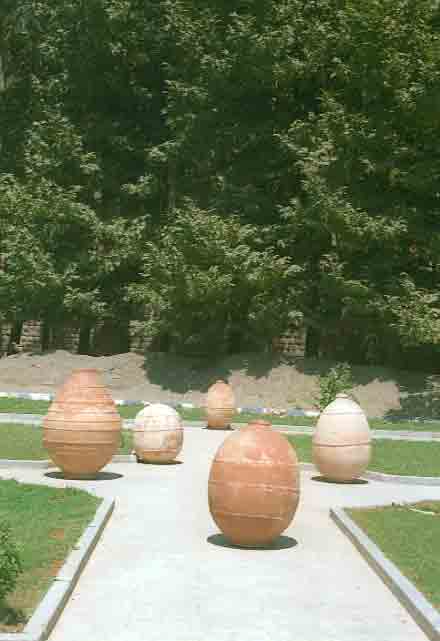 |
Large ceramic containers still standing on the
grounds; perhaps used for storage.
|
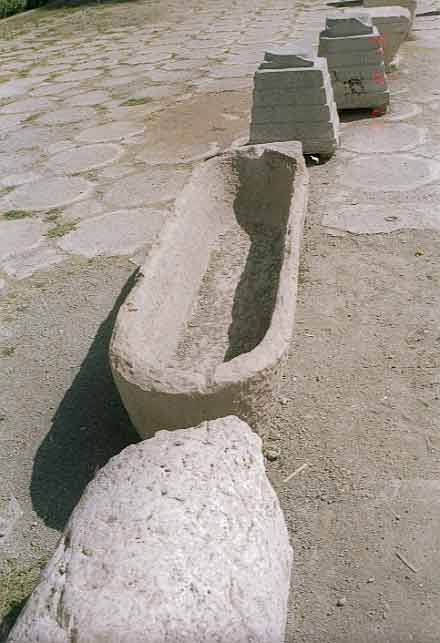 |
Stone caskets unearthed from nearby grounds.
Sassanians, as Zoroastrians did not pollute earth by burying
their dead thus placing them in caskets made of stone, ceramic or
practiced sky burial.
|